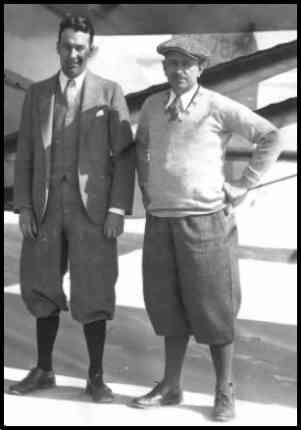
 |
|
The achievement of Walter E. Lees and Frederic Brossy, Detroit pilots, who flew a Diesel-engined plane over Jacksonville, Fla., for 84 hours and 33 minutes without refueling, means more than the establishment of a new world record. It is an indication of the increased cruising range which may be established from airplanes in the near future. Leaving aside the technical factors which made the accomplishment possible, the fact remains that a continuous flight of three and one-half days has been made, without descending for fuel. A stripped plane, flying for a record purposes over a limited area may not be comparable with a transocean flier, considering the varying changes to be met by the latter. Nevertheless, that which has been done by way of test, will speedily become the regular performance. Lindbergh, flying east, crossed the Atlantic in approximately thirty-three hours, from New York to Paris. Capt. Dieudonne Coste and Maurice Bellonte, reversing the route, flew from Paris to New York in approximately thirty-seven hours. Maj. Charles Kingsford-Smith and his three companions of the "Southern Cross" made the westward flight to Newfoundland in thirty-one hours, twenty-six minutes. Becoming temporarily lost in fog off the coast they ran out of fuel and were forced to land. The practicability of refueling in the air, over land, has been sufficiently demonstrated. But over the ocean no such possibility exists. The nonrefueling record suggests a satisfactory substitute. In the time Lees and Brossy spent aloft, a transatlantic plane with proper ratios of fuel capacity and engine power could take off at Detroit, cross the ocean, circle over Paris and return to Detroit, without landing. The engineer and fliers who have contributed to this nonrefueling record are writing a new chapter in aviation. Combined with present experiments in flight at high altitudes, above the level of storms -- notable among which is the impending Atlantic flight of Miss Ruth Nichols -- and with the increasing bullet-like speed developing notably under the capable hands of Capt. Frank Hawks, every increase in cruising range forecasts the day when transoceanic flights will not be limited by coastlines, but will be made from inland city to inland city, with comfort and security. 
 |